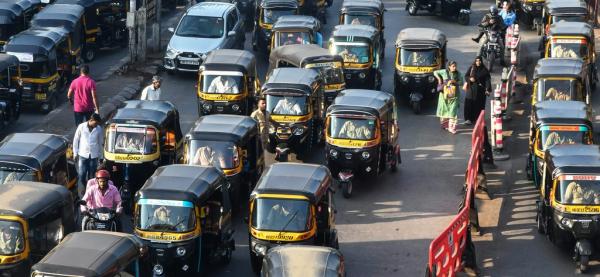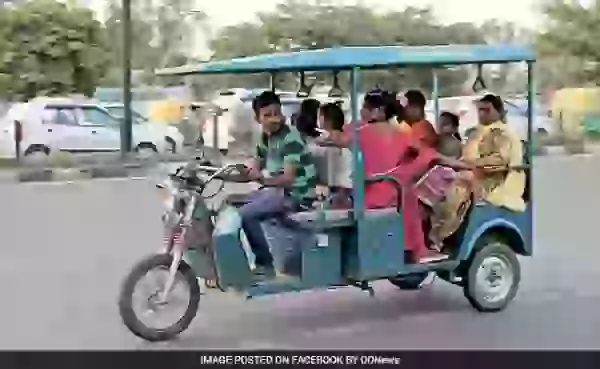What could Europe learn, and copy, from India's electric rickshaws?
There is electric life beyond cars, scooters and bikes.

India is going through a Messy Revolution due to its huge fleet of electric vehicles: one million electic rickshaws that are used by sixty million people every day.
Right now, a lot of those rickshaws are technically illegal, unsafe to ride in, and driven by unlicensed drivers. Besides, the electricity used to recharge them is often stolen.
On the plus side, those vehicles reduce air pollution in some of the world’s most polluted cities, and are “the only conveyance that will get [MANY people] home." Auto-rickshaws are safer and faster, but three to 10 times expensive.
E-rickshaws also are the only means of a decent living for drivers, who are mostly illiterate and also bring “at least four to six votes,” to local politicians. Of course, drivers of cycle rickshaws who cannot afford the upgrade to electric are “in dire straits.”
What about Europe?

This “e-rickshaw revolution” didn’t exist one decade ago, and indian regulators have started only in the last 4/5 years to deal with it. But indian cities have been using rickshaws for decades. Just making them electric isn’t going to give any cultural shocks to residents. European cities, instead, want to go electric, or so they say, but all the talk so far seems to be about buses, cars and scooters. Everything but rickshaws.
Of course, many parts of Europe have a climate that is (still) quite colder than most of India, making open vehicles not viable year-round. Besides, EU regulations would surely make e-rickshaws more expensive to operate than in India. And still…
Something that, without polluting the streets, can carry parents with infants, senior citizens or anybody else who couldn’t use scooters where cars couldn’t go, at lower prices and taking less space? Are we sure it could not be sustainable?
It would be great to see some serious study that, learning and copying whenever it makes sense from the “Indian revolution, evaluates how much e-rickshaws would cost in, say, Rome or Madrid. Among the things to evaluate from India I would put first:
- the experiments with “e-rickshaws that can exchange lithium ion batteries quickly [to avoid] downtime for drivers”
- all the activities (and motivations) by SmartE and others to “standardize the entire e-rickshaw ecosystem”
The start-up rents lithium-ion e-rickshaws to drivers, charging and maintaining them at its own lots. Drivers must follow routes set by a computer that assesses demand.
Big companies are starting to see potential in solving the problems.
Who writes this, why, and how to help
I am Marco Fioretti, tech writer and aspiring polymath doing human-digital research and popularization.
I do it because YOUR civil rights and the quality of YOUR life depend every year more on how software is used AROUND you.
To this end, I have already shared more than a million words on this blog, without any paywall or user tracking, and am sharing the next million through a newsletter, also without any paywall.
The more direct support I get, the more I can continue to inform for free parents, teachers, decision makers, and everybody else who should know more stuff like this. You can support me with paid subscriptions to my newsletter, donations via PayPal (mfioretti@nexaima.net) or LiberaPay, or in any of the other ways listed here.THANKS for your support!